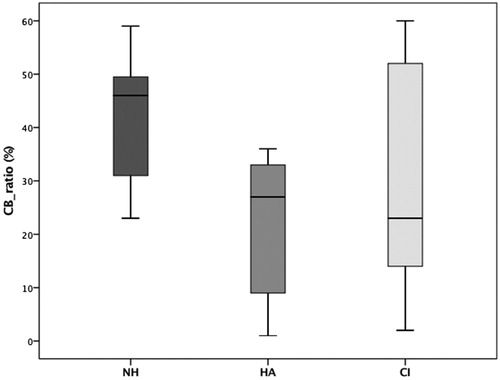Figures & data
Table 1. Subject characteristics and Medians (Md); children with HA (n = 5) and children with CI (n = 6).
Table 2. Individual child characteristics and results in children with HA (n = 5) and children with CI (n = 6) including test age (months), hearing age (months with NH, HA or 1st CI), CB ratio (%), total number of utterances, occurrence of oral stops; anterior stops; dental-alveolar stops (yes = 1, no = 0) and number of different consonants and number of different oral stops.


